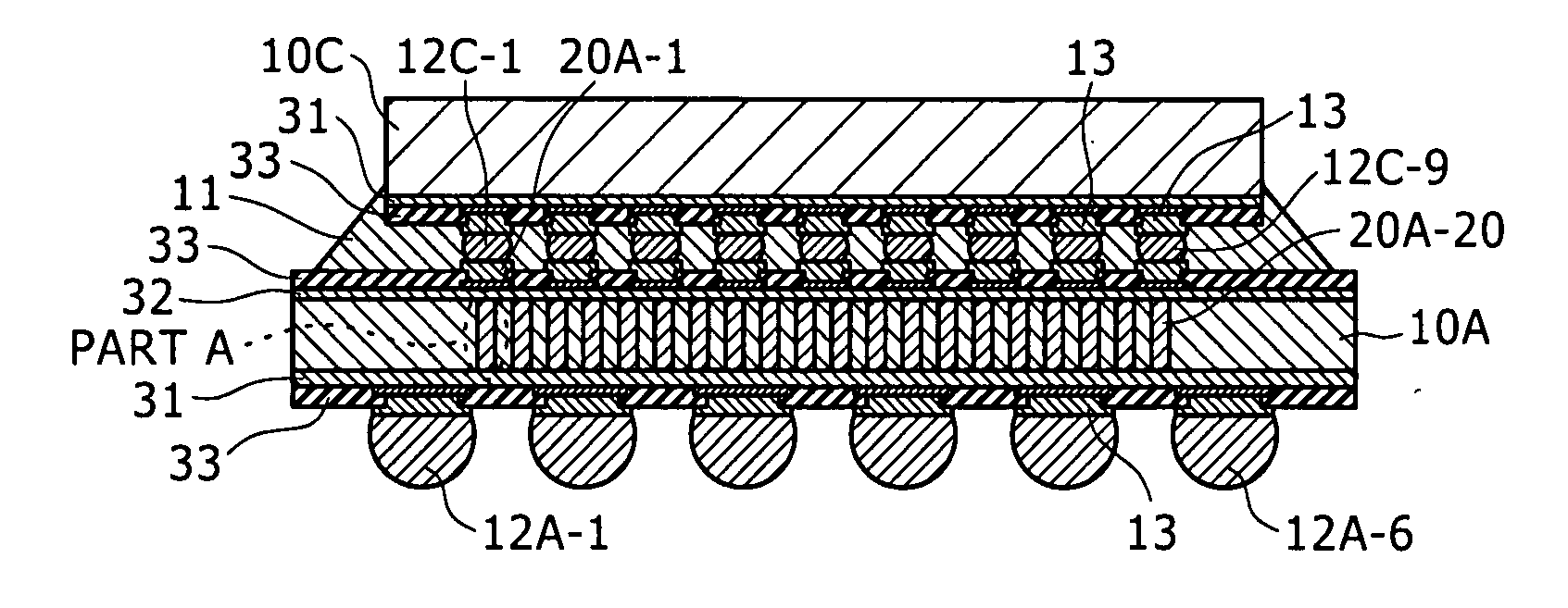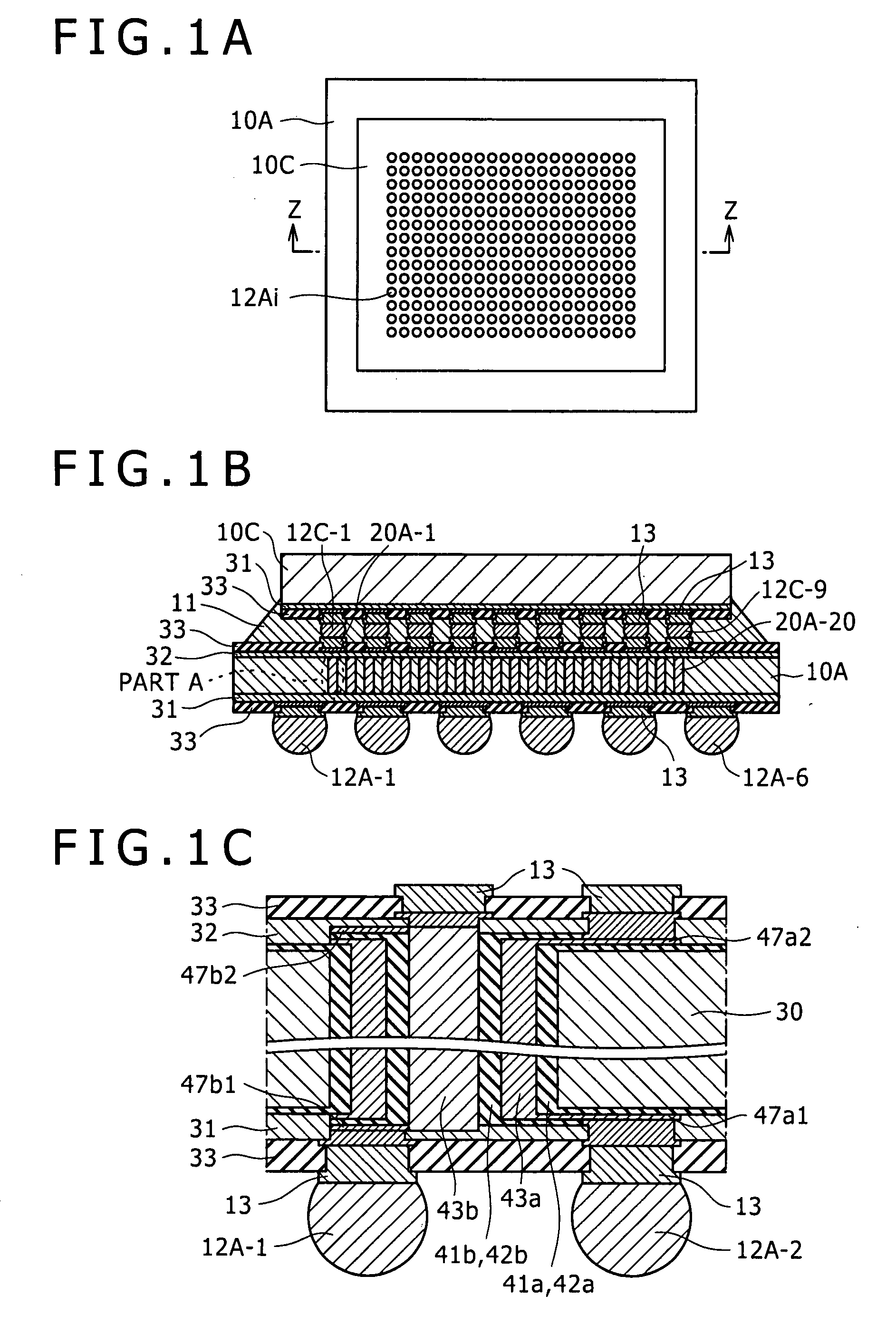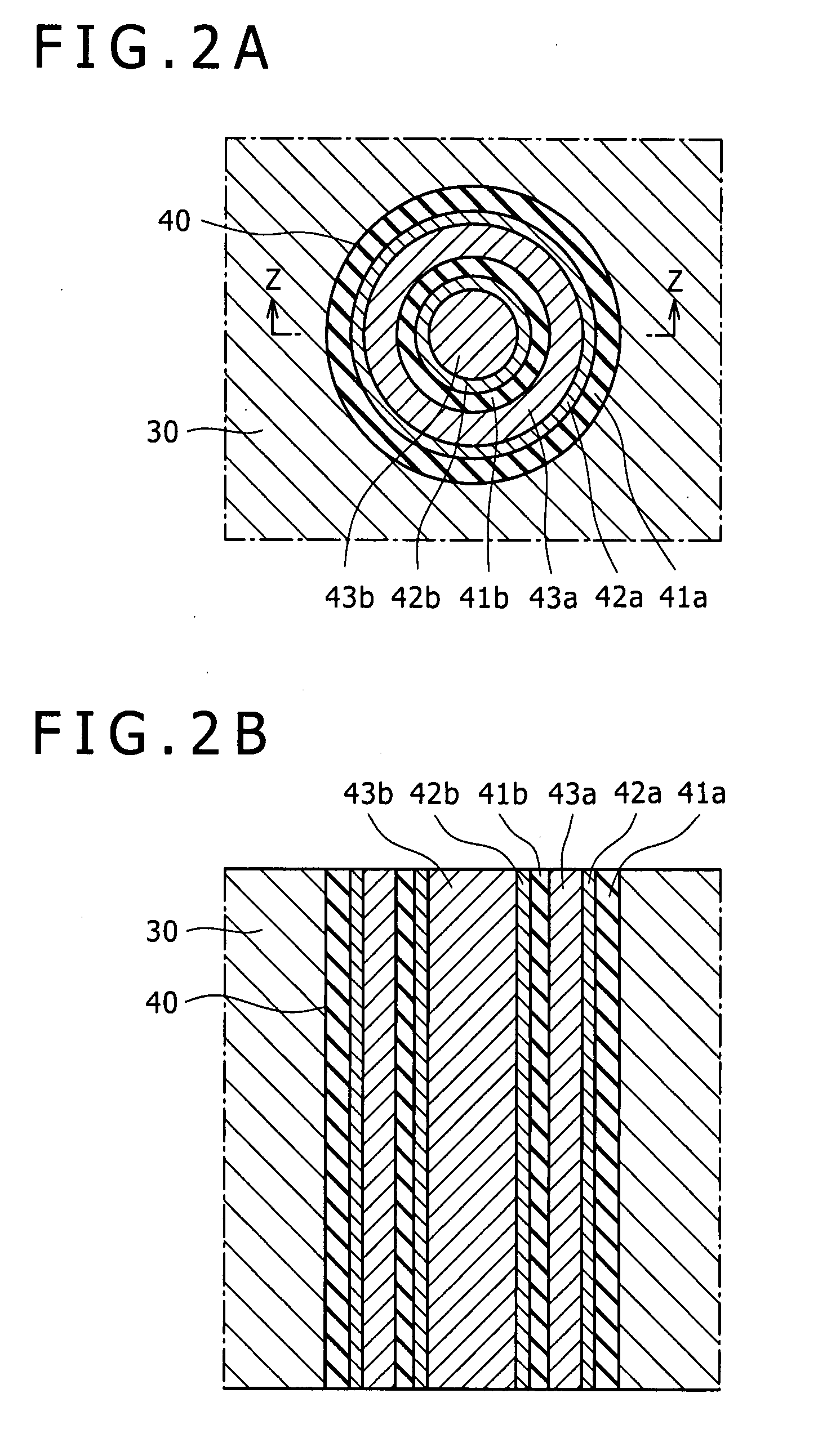Semiconductor device and method for manufacturing same
a semiconductor and semiconductor technology, applied in the direction of semiconductor devices, semiconductor/solid-state device details, electrical apparatus, etc., can solve the problems of difficult connection through wire bonding, difficult to ensure high-speed signal transmission, and the disadvantage of being inferior to a system-on-chip (soc) in the speed of signal transmission between chips
- Summary
- Abstract
- Description
- Claims
- Application Information
AI Technical Summary
Benefits of technology
Problems solved by technology
Method used
Image
Examples
Embodiment Construction
[0110] In a semiconductor device according to an embodiment of the present invention, it is preferable to form in a through-hole an insulating layer for electrically insulating plural through-interconnects from each other. If plural through-interconnects are electrically insulated from each other, the through-interconnects can be used as interconnect lines that transmit signals independently of each other. Furthermore, it is preferable that the plural through-interconnects be concentric with each other. This allows formation of plural through-interconnects having a large sectional area.
[0111] In addition, it is preferable that the through-holes be formed in a peripheral region or an inside region of the peripheral region of the substrate. Because plural through-interconnects are formed in one through-hole, there is no need to form through-holes at a high density, which can suppress a substrate size increase. Even when through-holes are formed in an element-formation region on a sub...
PUM
 Login to View More
Login to View More Abstract
Description
Claims
Application Information
 Login to View More
Login to View More - R&D
- Intellectual Property
- Life Sciences
- Materials
- Tech Scout
- Unparalleled Data Quality
- Higher Quality Content
- 60% Fewer Hallucinations
Browse by: Latest US Patents, China's latest patents, Technical Efficacy Thesaurus, Application Domain, Technology Topic, Popular Technical Reports.
© 2025 PatSnap. All rights reserved.Legal|Privacy policy|Modern Slavery Act Transparency Statement|Sitemap|About US| Contact US: help@patsnap.com



